
By Samantha Brooke - NOAA Fisheries Pacific Islands Regional Office Marine National Monument Program
September 25, 2015
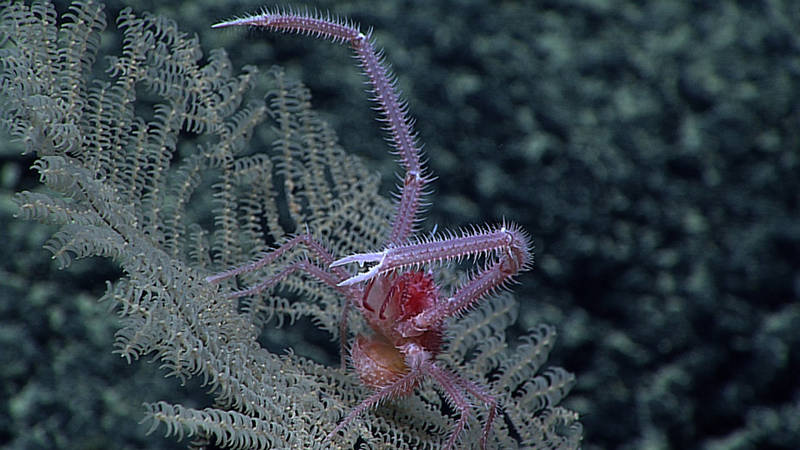
The Johnston Atoll portion of PRIMNM is so unexplored, that almost every dive, we are finding new organisms that our science team has never seen before, like this squat lobster who we found residing on a black coral. Image courtesy of the NOAA Office of Ocean Exploration and Research, 2015 Hohonu Moana. Download larger version (jpg, 1.3 MB).
It may seem counterintuitive to begin this story of celebrating marine national monuments in Wyoming, but stay with me on this one.
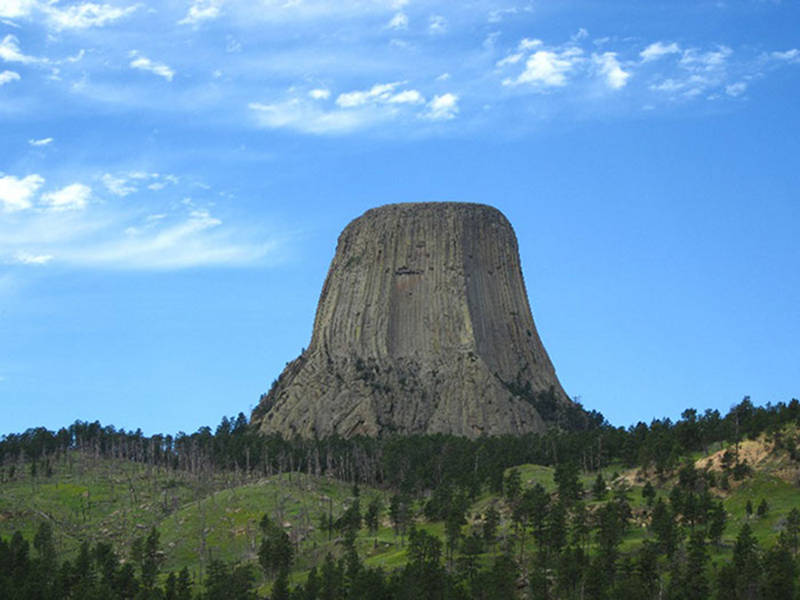
Devils Tower National Monument in Wyoming – the first monument. Image courtesy of Samantha Brooke, NOAA Fisheries Pacific Islands Regional Office Marine National Monument Program. Download image (jpg, 70 KB).
Next year is the 110th anniversary of the Antiquities Act. Signed into law in 1906 by Theodore Roosevelt, the Act allows a president to declare by proclamation “historic landmarks, historic and prehistoric structures, and other objects of historic or scientific interest” as national monuments. That same year, Roosevelt designated the first national monuments under this Act, beginning with Devils Tower in Wyoming, which became a monument on September 24, 1906.
When Roosevelt signed the Antiquities Act, it is unlikely he imagined the scale and variety of monuments that would be established through it, but I can’t help but think the conservation-minded president would be pleased with the results.
On September 25, 2014, almost exactly 109 years after the first national monument, President Barack Obama issued Proclamation 9173, which extended the boundaries of the Pacific Remote Islands Marine National Monument (PRIMNM), now known as Pacific Islands Heritage Marine National Monument. This expansion increased the monument’s area by nearly 308,000 square nautical miles.
The Monument, originally established by President George W. Bush in 2009, is managed by the Department of the Interior (through the U.S. Fish and Wildlife Service) and the Department of Commerce (through NOAA) under their respective authorities. Proclamation 9173 further protects the region’s pelagic ecosystems, along with seamounts and unstudied deep-sea communities, and created one of the largest protected areas on Earth. However, we still know very little about this area. Like Devils Tower, the undersea ridges and seamounts of PRIMNM were formed from volcanic activity. Unlike Devils Tower, they are not easily accessed or studied. Imagine, if you will, entire undersea mountain chains that have never been seen!
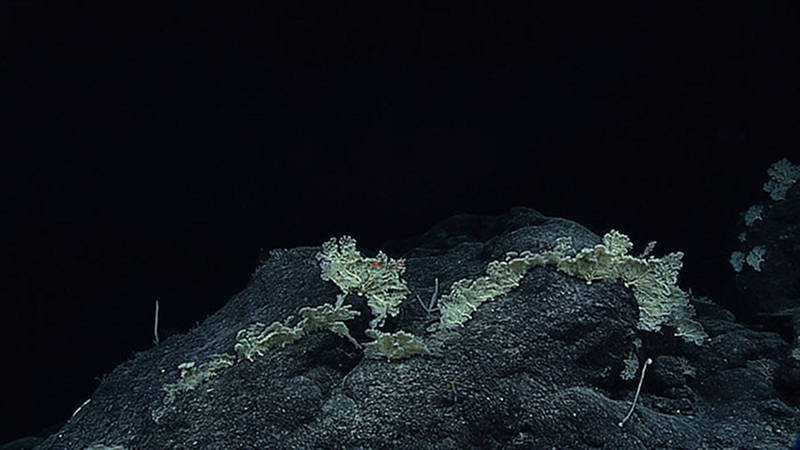
A large aggregation of branched deep-sea sponges documented on Dive 10 at Mid Karin Ridge. Image courtesy of the NOAA Office of Ocean Exploration and Research, 2015 Hohonu Moana Download image (jpg, 46 KB).
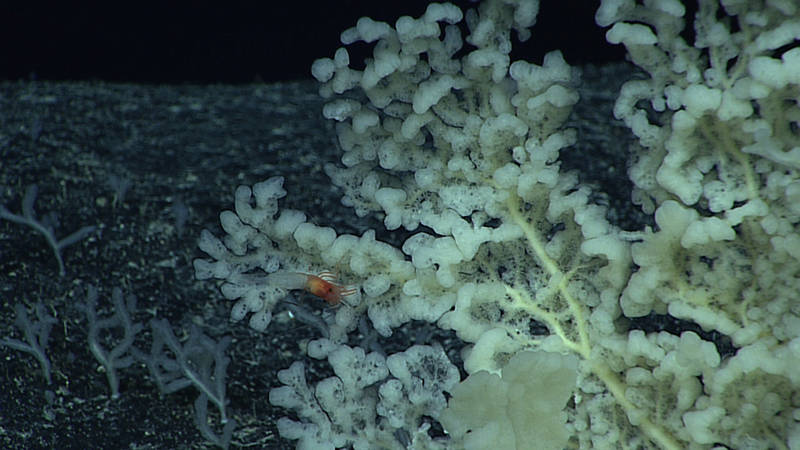
These may look like coral from a distance, but once Deep Discoverer got close, we were able to see that they were in fact sponges. Image courtesy of the NOAA Office of Ocean Exploration and Research, 2015 Hohonu Moana. Download larger version (jpg, 1.2 MB).
During Leg 4 of the Hohonu Moana expedition, we have the amazing opportunity to study one of these places for the first time, as remotely operated vehicle Deep Discoverer takes us more than 1,980 meters (6,500 feet) below the ocean's surface (more than seven times the height of Devils Tower) for our first look at the deep seamounts and ridges within the Johnston Atoll unit of PRIMNM. Today’s dive at Abyssal Ridge is one of the many sites visited during this expedition within the newly expanded region of PRIMNM.
The expedition has already revealed a new finding in this area, and the images coming back to us are astounding. Scientists are finding extensive deep-sea coral habitats, likely new species or new records, potential range extension for species (such as the long-finned cusk eel), and documentation of several rare unknown organisms.
As part of NOAA’s team tasked with managing PRIMNM, I can tell you that this information is critical as we develop management plans for the Monument. For example, we don’t know what types of species are present in the seamount communities found in the monument — are they similar to those in the Northwestern Hawaiian Islands, or do they look more like the species in other communities? The answer to this question will help us understand links between the Johnston Atoll ecosystem and other places.
As a member of the public, I am grateful to President Roosevelt, President Bush, and President Obama for their foresight in realizing the value of setting aside these unique places for us to study and preserve for future generations. I hope you will join with me in celebrating their protection by following the Okeanos Explorer’s journey.
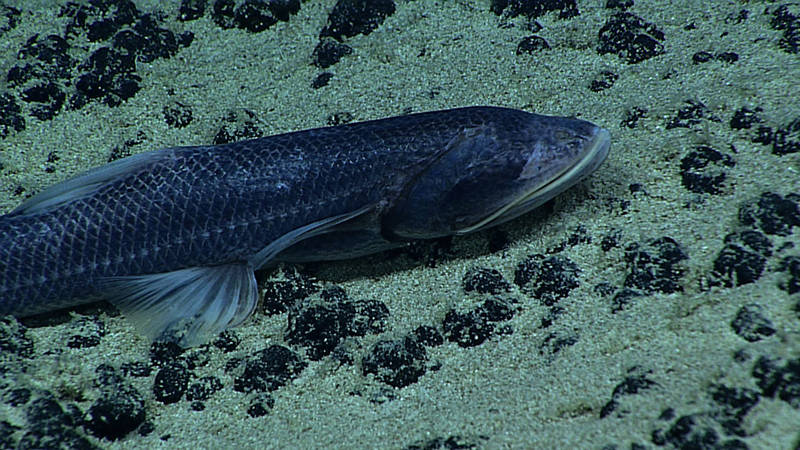
ROV Deep Discoverer imaged a Bathytyphlops (deep-sea tripod fish with greatly reduced eyes) during Dive 08 at Lone Cone. Image courtesy of the NOAA Office of Ocean Exploration and Research, 2015 Hohonu Moana Download larger version (jpg, 1.7 MB).
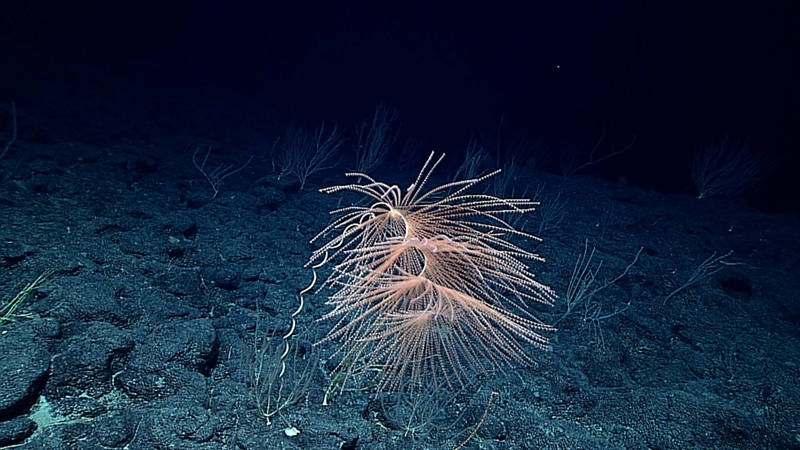
A particularly large, and likely very old, colony of Iridogorgia, with several colonies of other octocorals in the background, was imaged at Mid Karin Ridge. Image courtesy of the NOAA Office of Ocean Exploration and Research, 2015 Hohonu Moana. Download larger version (jpg, 1.6 MB).
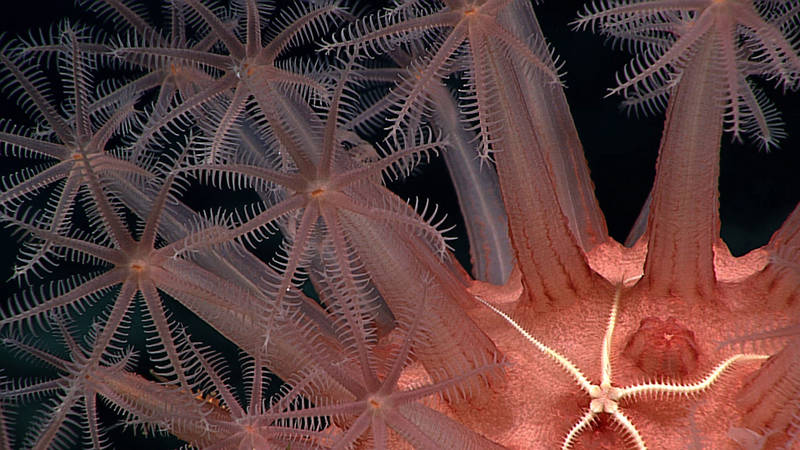
Although Anthosmastus may not be the biggest octocoral, it still provides habitat for other organisms, like this brittle star. Image courtesy of the NOAA Office of Ocean Exploration and Research, 2015 Hohonu Moana Download larger version (jpg, 1.4 MB).
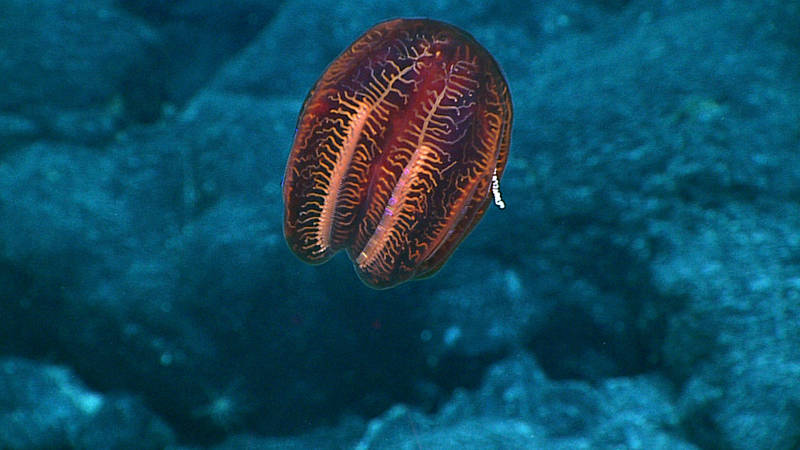
This ctenophore observed during Dive 09 at South Karin Ridge and belongs to the Family Aulacoctenidae, which was recently established by Lindsay & Miyake, 2007. Image courtesy of the NOAA Office of Ocean Exploration and Research, 2015 Hohonu Moana. Download larger version (jpg, 2.1 MB).
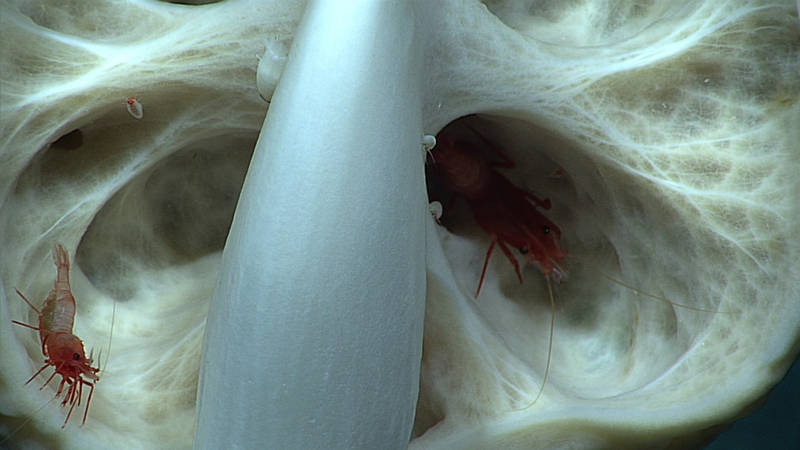
Sponges also provide valuable habitat for small organisms like these two shrimp. Image courtesy of the NOAA Office of Ocean Exploration and Research, 2015 Hohonu Moana. Download larger version (jpg, 1.2 MB).